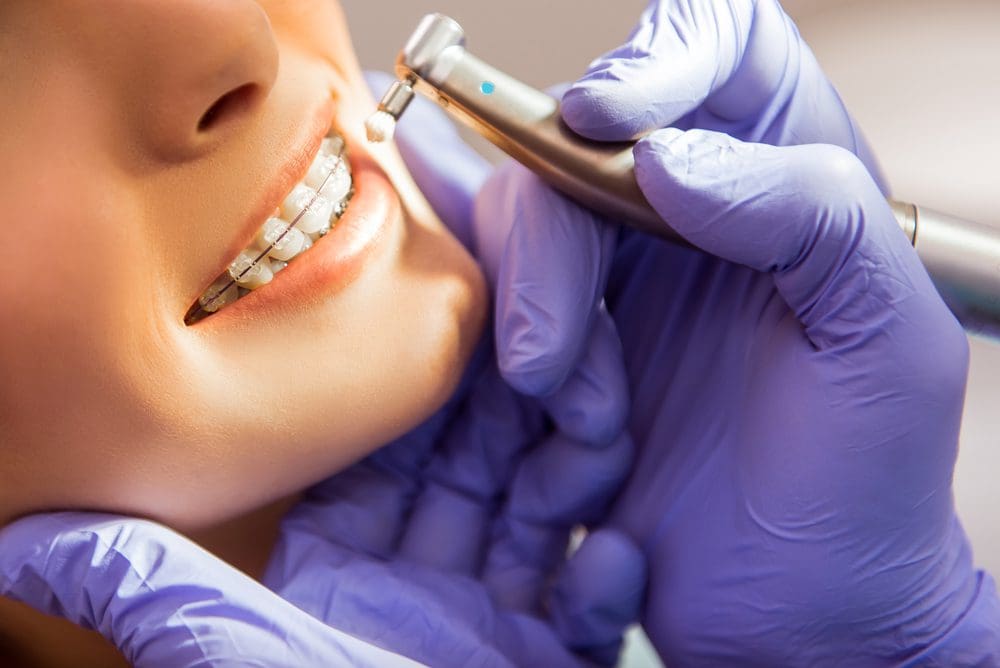The Advantages of Selecting a Cumming Orthodontist for Your Braces and Aligners
The Advantages of Selecting a Cumming Orthodontist for Your Braces and Aligners
Blog Article
Comprehensive Guide to Orthodontics Procedures for Fixing Dental Misalignments
In the world of orthodontics, the trip to attaining a perfectly aligned smile includes a myriad of procedures tailored to remedy oral imbalances. From typical dental braces to invisible aligners and even surgical options, the field of orthodontics provides a series of options to attend to differing levels of dental irregularities. Comprehending the ins and outs of each procedure, including their systems, benefits, and potential drawbacks, is important in making notified decisions about one's orthodontic treatment. As we browse via the thorough overview to orthodontic treatments for fixing dental misalignments, the intricate details of each approach will certainly unfold, clarifying the path toward a unified and practical oral placement.
Orthodontic Procedures Introduction

In addition to clear aligners and standard dental braces, orthodontists may additionally recommend various other treatments like headwear, palatal expanders, or retainers to resolve particular placement problems (orthodontist). These procedures are customized per individual's unique needs and might entail a combination of therapies to achieve the preferred outcomes. Normal adjustments and monitoring are vital components of orthodontic treatment to make certain progress is on track and to make any type of needed alterations along the way. By undergoing orthodontic procedures, clients can not only accomplish a straighter grin however additionally boost their total dental wellness and feature.
Conventional Braces: How They Function
When taking into consideration orthodontic treatments for oral imbalances, standard braces attract attention as a tried and true approach for fixing teeth placing. Conventional dental braces consist of braces, wires, and bands that collaborate to apply constant stress on the teeth, slowly relocating them into the preferred placement. The brackets are affixed to the teeth using an unique adhesive, and the wires are threaded with the braces. By adjusting the stress of the cords, orthodontists can control the instructions and pressure related to each tooth, leading them into proper placement over time.
One secret facet of just how conventional braces work is the procedure of bone remodeling. As pressure is put on the teeth through the braces, the bone surrounding the teeth is reshaped to support the new tooth settings. This remodeling is crucial for the long-term stability of the corrected alignment. People will need regular adjustments at the orthodontist's office to ensure the braces remain to use the right pressure for efficient teeth movement.
Unnoticeable Aligners: Cons and pros
These clear, customized trays are essentially undetectable when put on, making them an attractive alternative for people seeking an extra visually pleasing orthodontic therapy. Patients can remove the aligners before consuming or cleaning their teeth, decreasing the threat of food getting stuck in the home appliance and simplifying the cleansing procedure.

Surgical Orthodontic Options
Surgical treatments in orthodontics existing feasible choices for attending to complicated dental misalignments that may not be effectively resolved via standard orthodontic treatments. While conventional braces and unseen aligners can correct several orthodontic concerns, specific cases call for surgical intervention to accomplish ideal results. Surgical orthodontic alternatives are normally suggested for serious malocclusions, significant jaw disparities, and situations where the underlying bone structure requires modification to attain appropriate site alignment.
One usual medical orthodontic procedure is orthognathic surgical procedure, which involves rearranging the jaws to fix functional concerns such as problem eating or speaking. This surgical procedure is typically performed in partnership with an orthodontist that assists straighten the teeth before and after the treatment. Surgical orthodontics may likewise entail procedures to reveal impacted teeth, eliminate excess periodontal tissue, or improve the jawbone to develop a more unified face profile.
Before taking into consideration medical orthodontic options, individuals undertake an extensive analysis to identify the need and potential advantages of such interventions. aligners. While surgical treatment might seem complicated, it can significantly enhance both the feature and aesthetics of the smile in cases where traditional orthodontic therapies drop short
Retainers and Post-Treatment Treatment

Post-treatment treatment involves following the orthodontist's instructions vigilantly. This may include appropriate oral hygiene methods, going to follow-up consultations, and wearing the retainers as prescribed. Failure to comply with post-treatment care instructions can result in relapse, where my blog the teeth gradually return towards their original settings. Constant retainer wear, great oral hygiene, and regular oral exams are important for keeping the outcomes accomplished with orthodontic surgery and ensuring the long-term security of the dealt with dental placement.
Verdict
To conclude, orthodontic procedures offer numerous choices for fixing oral misalignments. Traditional dental braces use steel braces and cords to move teeth into correct positioning. Invisible aligners supply a more very discreet alternative however may not be ideal for all cases. Surgical orthodontic alternatives are available for extra serious imbalances. Retainers are typically made use of post-treatment to maintain the brand-new alignment. Generally, orthodontic treatments can successfully enhance oral health and visual look.
As we browse through the detailed overview to orthodontic treatments for correcting dental misalignments, the detailed information of each method will unfold, dropping light on the path towards a practical and unified oral placement. - orthodontist
One of the most typical orthodontic treatments is the use of dental braces, which are composed of steel braces and cords that use gentle stress to gradually change teeth into the desired position.When considering orthodontic treatments for dental misalignments, conventional braces stand out as a tried and true technique for fixing teeth positioning. Furthermore, unseen aligners might not be appropriate for complicated orthodontic problems that need even more considerable teeth motion, as they are usually recommended for moderate to moderate situations. Retainers are tailor-made orthodontic devices developed to hold teeth in their corrected placements after the completion of orthodontic treatment.
Report this page